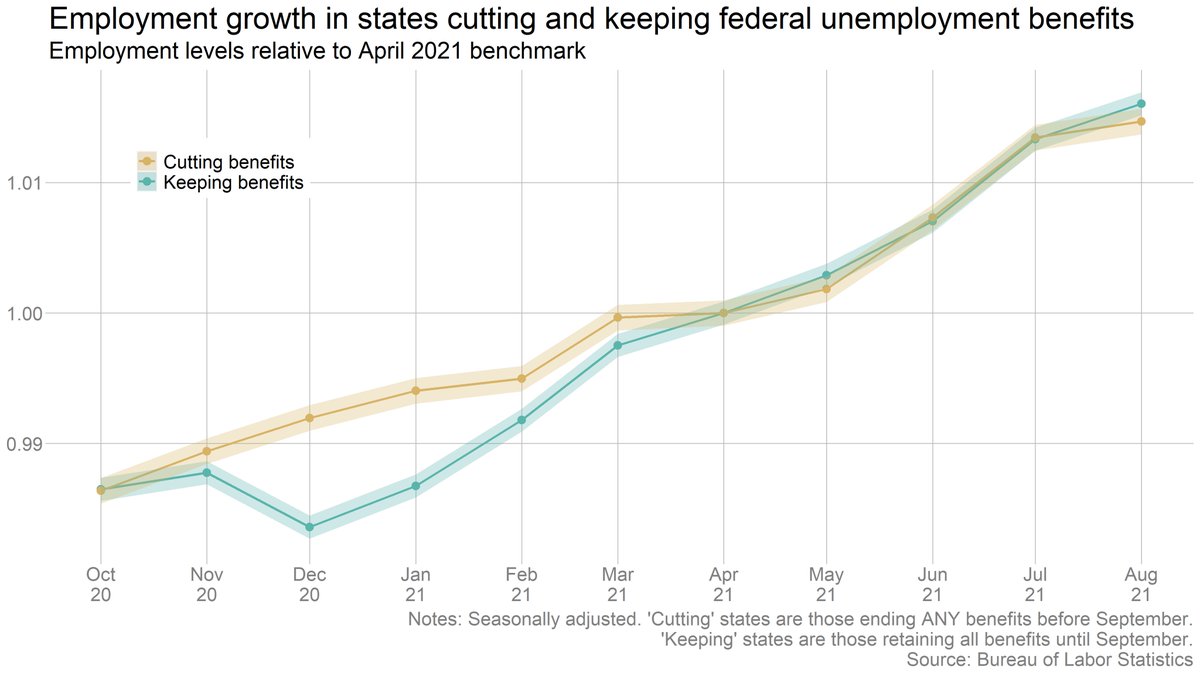
Couple follow-up charts to this, as I continue to dig through the data. (I'm still working through all this, so no big conclusions/takeaways here -- mostly just datapoints and a few observations.)
https://twitter.com/bencasselman/status/1450450907846565889
First, the surge in job-switching is heavily concentrated among younger workers. Among older workers, switching is still below prepandemic levels. Among prime-age (25-54), it's above, but not by that much. But job-to-job transitions are WAY up for workers under 25. 

Before you start complaining about "job-hopping Gen-Zers," though, note that: a) job turnover is *always* highest among younger workers, and b) young workers, prepandemic, were changing jobs *less* often than prior generations.
cc @graykimbrough
cc @graykimbrough
https://twitter.com/graykimbrough/status/1277576297691086849?lang=en
If we cut job turnover by occupation, we see a similar pattern to the educational chart I tweeted yesterday, but a bit less dramatic. The surge in job-switching is concentrated among front-line workers. It's up among office workers too, but not by nearly as much. 

Note that I'm collapsing already-broad occupational categories ("sales" for example includes both cashiers and real estate brokers) into even broader groupings. So that may be obscuring larger differences beneath the surface.
The CPS sample size really isn't big enough to drill down on specific occupations/industries, at least on a monthly basis. But we can see in JOLTS that there was a big spike in quits in accommodation and food service in September. 

Turning back to CPS, and aggregating across three months to beef up our sample, we can see the shift clearly, but it's not that dramatic -- even in this high-turnover industry, most workers stay in their jobs each month. 

But CPS can help answer the "where are they going?" question. We aren't seeing a wave of people hopping between restaurant jobs looking for better pay. Nor are we seeing people ditching the industry for greener pastures. The big increase has been people leaving work entirely. 

Same story if we focus on front-line food-service workers (coded by occupation rather than by industry): Significant but modest increase in turnover, with most of the action in people leaving work, not taking new jobs. 



Some caveats here: These charts include involuntary exits, not just quits (though layoffs are low right now). We also can't tell if people have other jobs lined up and are just taking some time off in between.
These numbers are also just generally noisy, so approach with caution.
These numbers are also just generally noisy, so approach with caution.
Taken at face value, though, these numbers seem consistent with anecdotes of service workers quitting jobs out of frustration with working conditions (maybe including Covid safety). Perhaps aided by savings and the knowledge they can get another job when they need one. \fin
• • •
Missing some Tweet in this thread? You can try to
force a refresh













